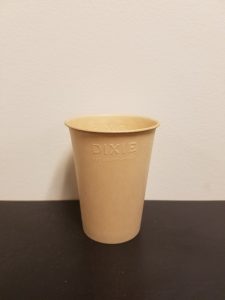Blog Post by: Martha Capwell Fox, Historian and Archives Coordinator
During the fall of 1918, Americans lived in an atmosphere that alternated between euphoria and terror. The November 11 Armistice that ended the carnage of World War I sparked large celebrations. But less than a month earlier, the second wave of the flu pandemic that had begun the previous spring had flared up with increased ferocity. Already high demand for disposable single-use cups exploded as people tried to avoid contagion. While this was a boon to Hugh Moore and Lawrence Luellen’s Individual Drinking Cup company, the makers of the Health Kup, it also boosted the fortunes of their competitors in the paper cup business. Ever the savvy marketer, Hugh Moore decided to make their “Kup” stand out by renaming it something a bit more catchy.
Next door to the Individual Drinking Cup’s offices and factory at 220 West 19th Street in Manhattan was the Dixie Doll Company. According to an online trivia site that doesn’t give its source, when doll manufacturer Albert Schindler bought the building, he named his business Dixie Doll Company rather than repaint the sign on the building. In any case, the name struck Moore as livelier and more attractive than “kup” and he asked Schindler for permission to use it. In that simpler time, Schindler just said yes, and the Dixie Cup was born.
The first Dixie Cups were elegant in their simplicity: cream-colored, with the word “Dixie” embossed in the paper. It wasn’t until 1928 that the colorful designs began to appear on Dixie cups.
Did Schindler come to regret sharing the name? A many-page Google search turns up only one mention of him that isn’t about this story. In the February, 1921 issue of the industry journal Toys, he is listed as representing a Brooklyn company called Permolin Products at a toy fair. Permolin made hollow paper maché toys shaped and colored like animals that were apparently used as boxes for candy or small treats. More than that, we don’t know. But Albert Schindler still goes down in history as the person who “gave” Dixie Cups their name.
























Join the Conversation!